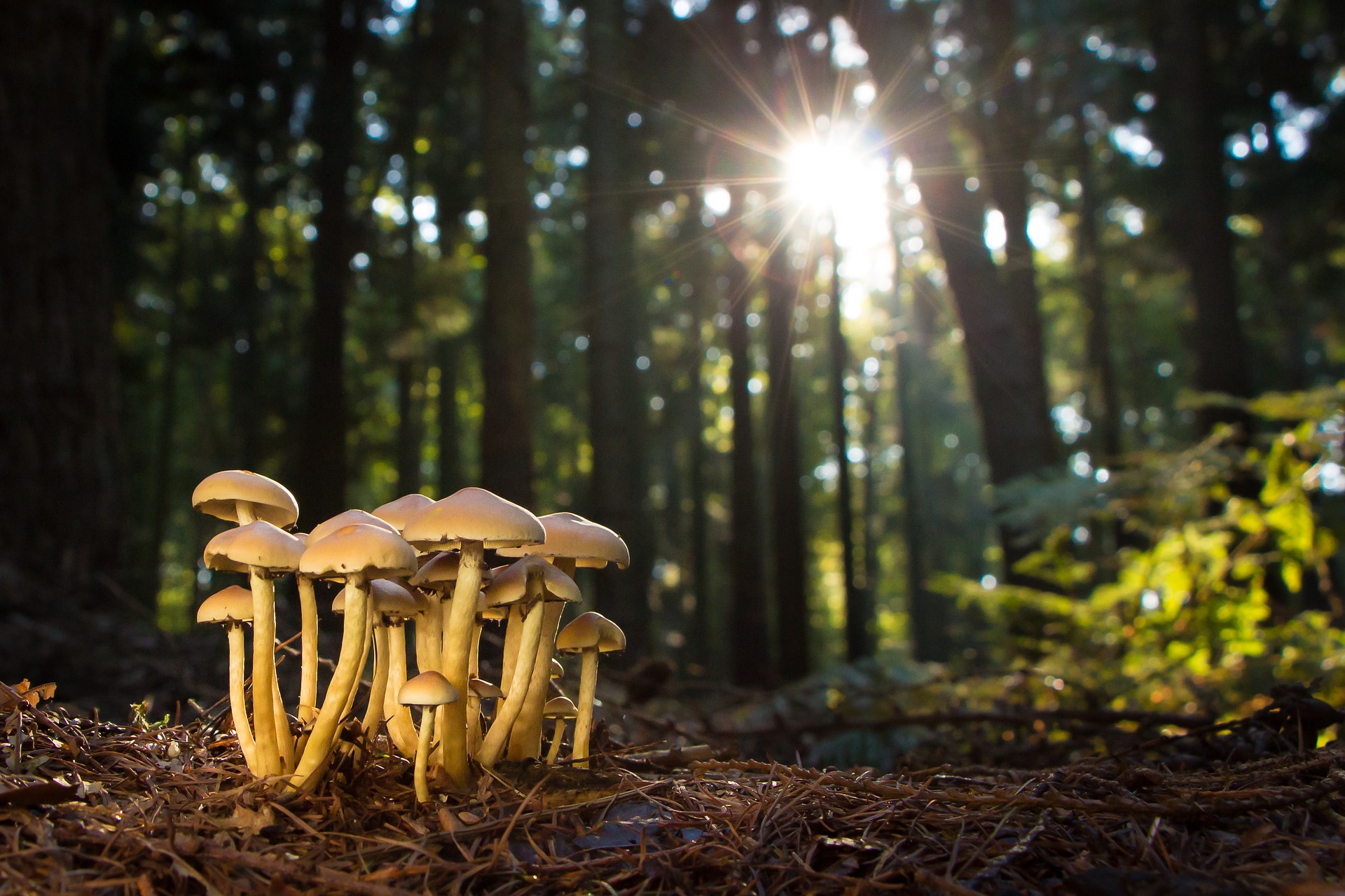Why Fungi Rule the World
While many people associate fungi with mushrooms alone, those familiar stems and caps are merely the fruit, like an apple on a tree. The real action is underground.
Author: Barbara Moran | Published: November 2016
alking through the woods with Jennifer Talbot (CAS’04) means seeing the forest with fresh eyes. But not the way you might think. Those tall, trembling pines stretching into the azure sky? Meh. The autumn sunlight dappling the canopy? Whatever.
The stick stippled with brown and white rot?
“Oh, YEAH!” shouts Talbot, stooping to grab the crumbly branch from the forest floor. She points to a cluster of gelatinous yellow blobs on the bark—a fungus called witches’ butter. “We used to think this was a slime mold, but it isn’t,” she says, pausing to admire the goo. “It’s actually edible, if you want to go there.”
For Talbot, all the action is underfoot. The assistant professor of biology studies a group of organisms called mycorrhizal fungi, which infect the root tips of over 90 percent of plant families on earth—in a good way. The fungi supply nutrients to the plants and get food in return. “The vast majority of plants you see outside could not live where they do without mycorrhizal fungi in the soil,” says Talbot.
Mycorrhizal fungi also have an outsize role in the decomposition of dead plants and the release of carbon. And since Earth’s soil contains more than three times as much carbon as its atmosphere, what fungi do in the soil could dramatically affect climate change. But nobody knows exactly how, and climate models are woefully fungus-free. Talbot, trained in analytical chemistry and working in biology, is particularly well positioned to fill this knowledge gap, and she’s using genetic sequencing, computer modeling, and ecosystem measurements to uncover fungi’s role. Kathleen Treseder, a professor of ecology and evolutionary biology at the University of California, Irvine, and Talbot’s PhD advisor, says Talbot is “doing stuff that no one else can do.”
One conclusion: humans have underestimated the humble fungi. Not Talbot. As she puts it, “Mycorrhizal fungi are running the world.”

